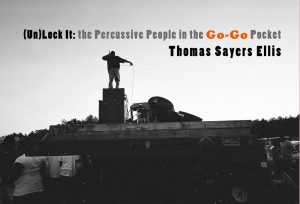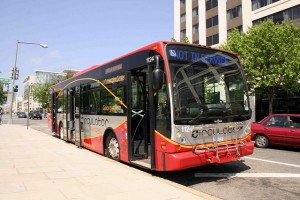Journalist and author Denene Millner on why allowing her daughters’ curious friends to touch their hair (after asking permission) is important:
Journalist and author Denene Millner on why allowing her daughters’ curious friends to touch their hair (after asking permission) is important:
The Smithsonian’s Anacostia Community Museum marked the end of an exhibition on Gullah culture by organizing the world’s largest ring shout.
Mayor Bloomberg wants to give ex-cons a boost in finding jobs “As part of a $127 million initiative to boost the prospects of underemployed black and Latino men, including those who’ve had brushes with the law, the mayor ordered city agencies not to ask about a job applicant’s criminal record until after they make it through the interview process.” (New York Post)
Who is ‘marrying out,’ and why some people are more likely to than others Interesting Q+A by our sister blog, Multi-American, which asked questions like why black Latinos are more likely to marry out than white Latinos. Answer? “Hispanics, if they are white, they can just sort of blend in, where blacks never would, never could.” (multiamerican.scpr.org)
Why the new biracial Spider-Man matters “It’s about a black kid in D.C., a Dominican kid in the Bronx or a young Mexicano from California being able to read a comic and come away from it saying, “I can be Spider-Man.” Generations of minority comic-book fans before this day, couldn’t say such a thing.” (The Washington Post)
Black Student Sues School Over ‘Wigger Day’ Perhaps you are wondering, how does one celebrate ‘Wigger Day’? “Students wore clothes and behaved in a manner that “‘from their perspective, mimicked black culture.’” (The Root)
Why Are White Guys Climate Skeptics? “As conservative white males become less numerous and powerful, this might increase the tendency toward protectionism/withdraw/hostility, particularly on the question of climate change.” (Mother Jones)
As people of color become a majority, is it time for journalists to stop using the term ‘minorities’? Ten years ago, the San Diego City Council voted to ban use of the words “minority” and “minorities” in all official city documents. “City leaders said “minority” implied being minor and inferior.” (poynter.org)
 What: “(Un)Lock It: The Percussive People in the Go-Go Pocket” photo exhibition.
What: “(Un)Lock It: The Percussive People in the Go-Go Pocket” photo exhibition.
When: Opening is from 6 to 8 p.m., Friday. The show runs until Oct. 7.
Where: The Gallery at Vivid Solutions, 2208 Martin Luther King Jr. Ave SE.
Cost: Free.
Why you should go: Photographer and drummer Thomas Sayers Ellis has been documenting the lives of local go-go stars and shows since the 1980s. His images capture D.C.’s homegrown musical culture even as it appears to be vanishing from the District’s borders.
Other events to consider: If you’re between 13 and 17 years of age (or know someone who is) consider attending Portraits After 5, which will feature a youth fashion show, portrait booths and the chance to view art at the National Portrait Gallery. The teen event takes place 6 to 10 p.m., Saturday.
Racial disparities in drug enforcement are well-documented. Today, Washington City Paper‘s Rend Smith digs into how this plays out in the District, where black residents are eight times more likely to be arrested for marijuana possession than whites.
Smith writes about the common notion that white people tend to buy and smoke marijuana inside their homes, as opposed to African Americans who deal and smoke outside more frequently:
Court records for some of those arrested east of the river back that belief up. They describe vice officers spotting suspects engaging in open-air blazing or buying from street corner dealers. One subject “was walking down the street smoking a brown cigar” when cops spotted him. The recklessness involved would seem to disqualify disparate rates of marijuana arrests in the city as a civil rights issue: Black smokers are choosing to be flagrant about their pot use and so attracting the attention of cops who have no choice but to grab them.
But even if assumptions about smoking and dealing habits are solid, that doesn’t mean there’s no problem with the way marijuana laws are currently being enforced in black and white neighborhoods. Taking my own experience as an African American who grew up poor into account, I remember some family and friends who puffed outside—whether that involved a pack of Kools or a joint meticulously sculpted from Top rolling papers—out of respect for others in their household, particularly where there was more than one generation (and therefore more than one set of moral values) under one roof. Dealing inside the house would have been all the more inappropriate. Although that’s certainly not the situation for every black person who tokes up or does a hand-off in Ward 7 or Ward 8, the idea is that you can’t just assume they’re being belligerent, and therefore asking for repercussions.
The problem becomes even more pronounced in D.C., given the city’s high incarceration rate (fourth in the nation, when compared to states). Marijuana possession can land you six months in jail and up to $1,000 in fines.

Elvert Barnes / Flickr
Riding D.C. Circulator can be much more pleasant than riding Metrobus; lower fares, more frequent buses and simple, quick routes. Starting Oct. 3, the buses will drive east of the Anacostia River for the first time.
The D.C. Department of Transportation began D.C. Circulator in 2005 as an easy way to get around areas that had a lot of activity. Most of the buses travel in Northwest. But the Circulator may end up serving other purposes as well in Ward 8, where 20 percent of people earn less than $10,000 a year and the unemployment rate is higher than 20 percent.
“You can live in the same city and there can be so many walls, real and perceived, for children, families and households who want to enjoy their D.C. experience,” ANC 8D06 Commissioner Kianna Fowlkes said during Tuesday’s DDOT public hearing. “Circulator is a really good way to extend over to this side and make us feel like we have access to the same sites, cultural or economic, to jobs, to the same food.”
Fares cost $1, which is 50 cents cheaper than Metrobus. The buses are more reliable, arriving every 10 minutes, and only make three or four stops a mile. The buses are proposed to start at Skyland and arrive at the Harris Teeter and the Potomac Avenue Metro.
DC Emergency Assistance Runs Dry as Temperatures Heat Up Sick of the heat? Imagine if you needed emergency funds for utilities or rent when “the shelter system is nearly at capacity and new families without any place to stay are still being turned away.” (dcfpi.org)
A Fascinating Look at the Political Views of Muslim Americans Gallup poll: “its most attention grabbing finding is the fact that Muslim Americans are more likely than Christians or Jews to believe that targeting and killing civilians is never justified, whether it is done by the military or an individual. Put another way, Christians and Jews are more comfortable with civilians being targeted and killed by a wide margin.” (The Atlantic)
Kreayshawn: “There Are, Like, Times When It Sucks Being White” Controversial new female rapper Natassia Zolot, also known as “Kreayshawn” on growing up white, in Oakland, CA: “Kreayshawn explained how it sucked to be her growing up. ‘When I was younger, growing up in the ‘hood, being the only white girl, like, there’s time when you’re like s—t, it sucks being white, you know?’” (colorlines.com)
Blacks want in on discussion over city’s bike proposal Tension over gentrification and race permeate the debate about biking in Portland: “‘The issue isn’t about race versus bikes…The issue is African Americans have not been included in the discussions about the outcomes that are taking place in their own neighborhood.’”(northeastportland.katu.com)
Hispanic growth in N.Va. led by Salvadorans, South Americans “Growth in Fairfax — traditionally a mixing bowl — has been overshadowed by the explosion in Prince William, where the Salvadoran population grew more than six times over in 10 years.” (Washington Examiner )
Promoting Anacostia way west of the river.
D.C. Assistant Police Chief Diane Groomes says that the Metropolitan Police Department is facing “challenges” in and around Columbia Heights, where Latino immigrants are often the targets of a growing number of robberies and assaults:
The reason? “I think people realize they might be carrying cash, also they might not report it to police, so I think they become victims of crime more than others…they present a unique opportunity,.” Groomes said.
The area, which law enforcement call Police Service Area 302, is bordered by 16th Street NW, Harvard Street NW and Park Place NW, and it’s 31 percent Hispanic. Groomes characterized the incidents as crimes of opportunity, not hate crimes.
Didier Sinisterra, deputy director of the Mayor’s Office of Latino Affairs confirmed that the office is working with police to provide information to Latino residents on protecting themselves. .
“We have identified three key locations where we will be doing local outreach to inform people and hand out additional information: Spring Road, Mount Pleasant St and Columbia Heights.”
According to Sinisterra, the outreach efforts received a positive response. “We engage our community, go into local businesses. We let people know about the situation and we encourage them not to carry a lot of cash. We chose Friday because that is when a lot of Latinos get paid.”
OLA is also encouraging people to open bank accounts, so that they aren’t carrying large amounts of cash. This week, they will be in Mount Pleasant on Friday, from 4 p.m. to 7 p.m.
Josie Rizo, who works on the 1400 block of Irving St NW isn’t concerned. “So far nothing has happened and I’ve been working here for a year now,” she said, adding that she would go to the police if she is targeted by a crime. “I feel pretty safe…In this area especially, there are a lot of people walking around, so that helps.”
The NPR Argo Network is a collection of websites by NPR member stations committed to strengthening local journalism
Learn More...
Humanosphere reports on global health and the fight against poverty from KPLU in Seattle
The Empire Reports on city and state politics from WNYC in New York
The Informant reports on cops, courts and communities from KALW in Oakland
Multi-American reports on immigration and cultural fusion from KPCC in Southern California
On Campus reports on higher education from MPR in Minnesota
Ecotrope reports on nature and community from OPB in Oregon
The Key reports on local music from WXPN in Philadelphia
CommonHealth reports on health, medicine and healthcare reform from WBUR in Boston
Argo MindShift reports on technology and education from KQED in San Francisco
Home Post reports on the military from KPBS in San Diego